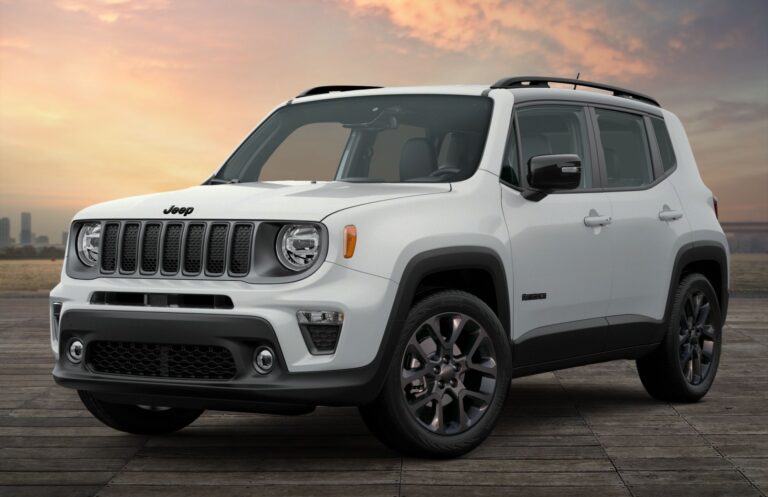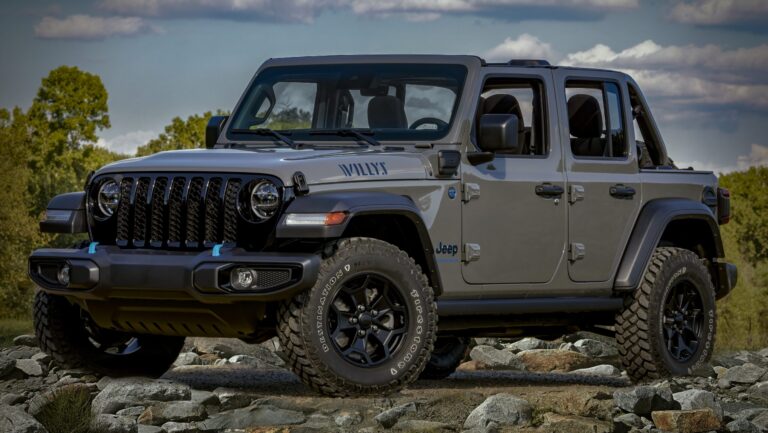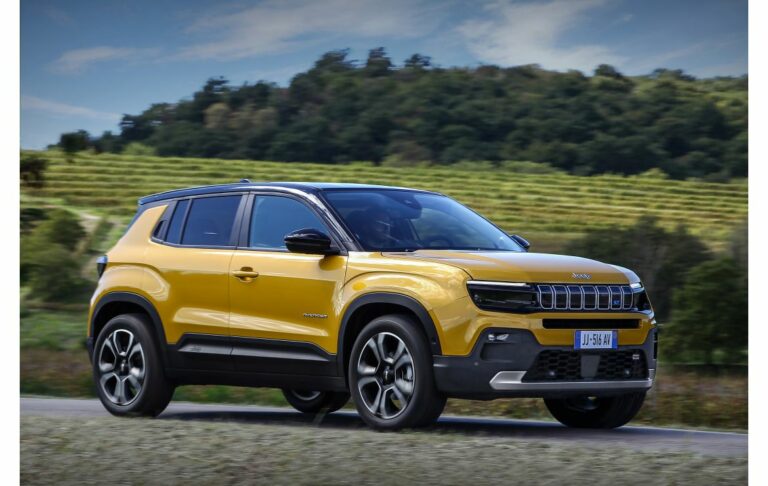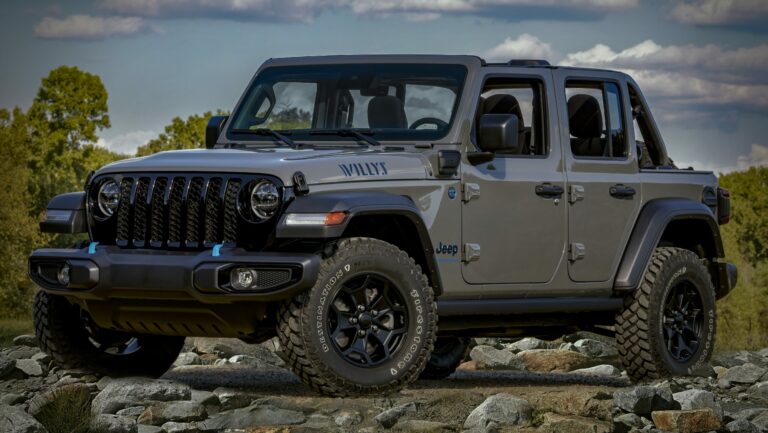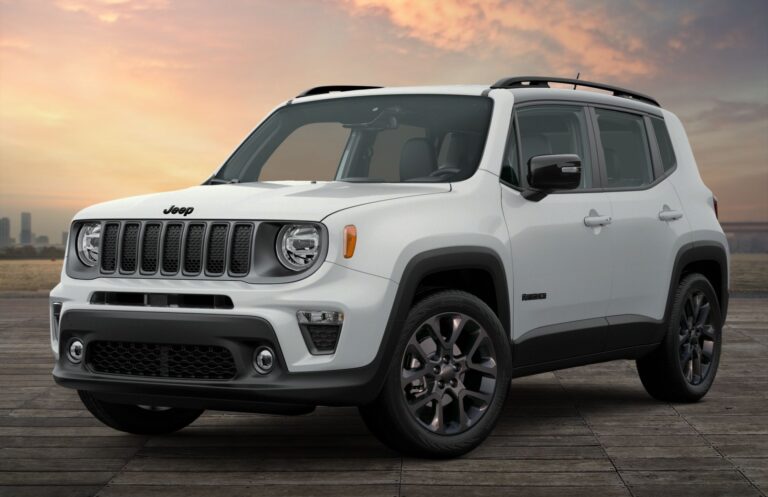How Much Does A Jeep Wrangler Cost In Kenya: Unraveling the Price Tag of an Off-Road Icon
How Much Does A Jeep Wrangler Cost In Kenya: Unraveling the Price Tag of an Off-Road Icon jeeps.truckstrend.com
The open road, the untamed wilderness, the thrill of adventure – few vehicles embody this spirit as purely as the Jeep Wrangler. With its iconic seven-slot grille, removable doors, and legendary off-road prowess, the Wrangler holds a special allure for motoring enthusiasts worldwide, and Kenya is no exception. In a country boasting diverse landscapes, from the sandy beaches of the coast to the rugged terrain of the Great Rift Valley, a vehicle designed for conquering challenging environments finds a natural home.
However, acquiring this symbol of freedom in Kenya is not as straightforward as walking into a showroom and picking one off the lot. The question, "How much does a Jeep Wrangler cost in Kenya?" is multifaceted, influenced by a complex interplay of factors including the vehicle’s age, trim level, condition, and, most significantly, Kenya’s unique import duty and taxation structure. This comprehensive guide aims to peel back the layers of these costs, providing a detailed understanding for anyone dreaming of owning a Wrangler in the heart of East Africa.
How Much Does A Jeep Wrangler Cost In Kenya: Unraveling the Price Tag of an Off-Road Icon
Understanding the Pillars of Wrangler Pricing in Kenya
The price of a Jeep Wrangler in Kenya isn’t a single, fixed figure. Instead, it’s a dynamic sum shaped by several critical components:
-
New vs. Used Vehicles: This is arguably the most significant differentiator.
- New Wranglers: Direct from the manufacturer (or official distributors, though availability for new Wranglers in Kenya is often limited to special orders) command the highest prices due to their pristine condition, latest technology, and warranty.
- Used Wranglers: The vast majority of Wranglers in Kenya are pre-owned imports, primarily from markets like the USA, Japan, or the UK. Their prices vary wildly based on model year, mileage, and overall condition.

-
Model Year and Generation (JK vs. JL):
- Jeep Wrangler JK (2007-2018): These models, especially the later years (2012-2018 with the improved 3.6L Pentastar engine), are a popular choice due to their proven reliability and slightly lower price point compared to the newer generation.
- Jeep Wrangler JL (2018-Present): The current generation offers significant advancements in comfort, technology, and fuel efficiency (with options like the 2.0L turbocharged engine or even a 4xe hybrid). These come at a premium.


Trim Level and Configuration: Wranglers come in various trims, each offering different levels of capability and luxury:
- Sport: The base model, offering essential Wrangler features.
- Sahara: A more comfortable and refined option with additional features and body-colored fenders/hardtop.
- Rubicon: The ultimate off-road beast, equipped with heavy-duty axles, electronic locking differentials, and a disconnecting sway bar. This trim consistently fetches the highest prices due to its unparalleled capability.
- 2-Door vs. 4-Door (Unlimited): The 4-door Unlimited models are generally more expensive due to their increased practicality and passenger capacity.
-
Engine Type: While the 3.6L Pentastar V6 is common, the newer 2.0L turbocharged engine (especially in JL models) offers a different driving experience and potentially better fuel economy, which can influence price.
-
Import Duties and Taxes (The Kenyan Factor): This is the largest single contributor to the final price of an imported Wrangler. Kenya levies substantial duties and taxes on imported vehicles, calculated on the Customs Value (CIF – Cost, Insurance, and Freight) of the vehicle. These include:
- Import Duty: 25% of the CIF value.
- Excise Duty: 20% of (CIF + Import Duty).
- Value Added Tax (VAT): 16% of (CIF + Import Duty + Excise Duty).
- Import Declaration Form (IDF) Fee: 2.25% of the CIF value (minimum KES 5,000).
- Railway Development Levy (RDL): 1.5% of the CIF value.
- These cumulative duties can effectively double or even triple the initial purchase price of the vehicle from its origin market.
-
Shipping Costs: The cost of transporting the vehicle from its country of origin to the port of Mombasa varies but typically ranges from KES 150,000 to KES 300,000 depending on the origin and shipping method.
-
Condition and Mileage (for Used): As with any used car, lower mileage and excellent condition command higher prices. Vehicles with extensive modifications (lifts, larger tires, winches) can also increase the price, though not always proportionally to the cost of the mods.
Buying New: The Dealership Experience in Kenya
While not as common as in other markets, it is theoretically possible to purchase a brand-new Jeep Wrangler directly in Kenya. Official dealerships for Stellantis brands (which includes Jeep) exist, but specific models like the Wrangler are often not kept in stock due to their niche market and high import costs.
If you opt for a new Wrangler, you’ll likely need to place a special order. The benefits include a full manufacturer’s warranty, access to official service centers, and the latest model year features. However, the price tag will be significantly higher, often starting from KES 15,000,000 and going upwards of KES 20,000,000 for top-tier trims like the Rubicon. This price reflects the initial cost of the vehicle, shipping, and all the cumulative Kenyan duties and taxes factored into the dealer’s pricing structure.
Navigating the Used Market: Importing vs. Local Purchase
The used market is where most Kenyans find their Jeep Wranglers. Here, you have two primary avenues:
-
Direct Import:
- Pros: Wider selection of models, trims, and years; potentially lower base prices before duties; ability to source a specific configuration or color.
- Cons: Complex process involving sourcing, shipping logistics, and customs clearance; significant upfront capital needed for duties; no warranty; risk of hidden mechanical issues if not properly inspected at source.
- Process Overview:
- Source the Vehicle: Use online auction sites (e.g., Manheim, IAAI in the US), reputable Japanese/UK car exporters, or work with a trusted local import agent.
- Purchase: Pay for the vehicle and arrange shipping.
- Shipping: Vehicle transported to Mombasa port.
- Customs Clearance: This is the critical step. You’ll need a clearing agent to handle the paperwork and payment of all duties and taxes to the Kenya Revenue Authority (KRA). Remember the 8-year rule: vehicles imported into Kenya must be less than 8 years old from the year of first registration.
- Registration: Once cleared, the vehicle is registered with the National Transport and Safety Authority (NTSA).
- Cost Implication: While the car itself might seem cheaper at source (e.g., $25,000 for a good used JL), adding shipping ($2,000-$3,000) and then the hefty Kenyan duties (often 100-150% of the CIF value) can push the final cost significantly higher.
-
Local Used Market:
- Pros: Immediate availability; opportunity for a physical inspection and test drive; duties already paid by the previous owner; simpler transaction process.
- Cons: Limited selection; prices can be inflated due to high demand and the previous owner’s duty payment; vehicle history might be harder to verify if not from a reputable dealer.
- Where to Look: Online platforms like Jiji.co.ke, Cheki.co.ke, local car yards, and private sellers through referrals.
Beyond the Purchase Price: The True Cost of Wrangler Ownership in Kenya
The initial purchase price is just the beginning. Owning a Jeep Wrangler in Kenya entails ongoing expenses that potential buyers must factor into their budget:
-
Fuel Consumption: Wranglers, especially the V6 models, are not known for their fuel efficiency. Expect relatively high fuel bills, particularly with Kenya’s petrol prices. Average consumption can range from 6 to 9 kilometers per liter (approximately 15-20 MPG), varying with driving style, terrain, and engine type.
-
Maintenance and Servicing: While rugged, Wranglers require regular maintenance. Parts, especially specialized components for off-road trims like the Rubicon, can be expensive and sometimes require importation. Finding skilled mechanics familiar with Jeep’s specific engineering is crucial.
-
Insurance: Due to their value, complexity, and perceived higher risk (both for theft and accidents given their off-road use), insurance premiums for Jeep Wranglers in Kenya tend to be higher than for conventional SUVs. Comprehensive insurance is highly recommended.
-
Registration and Licensing Fees: Annual road tax and other licensing fees are recurring costs.
-
Modifications and Upgrades: Many Wrangler owners customize their vehicles with lift kits, larger tires, bumpers, winches, and other off-road accessories. While these enhance capability and aesthetics, they represent a significant additional investment.
Estimated Price Table: How Much Does a Jeep Wrangler Cost in Kenya?
Please note: These figures are approximate estimates as of late 2023/early 2024 and can fluctuate significantly based on exact model year, mileage, condition, specific features, import source, current exchange rates, and market demand. "Fresh Import (incl. Duties)" refers to the total cost a buyer would incur when importing a vehicle and paying all Kenyan duties. "Locally Pre-Owned" refers to vehicles already in Kenya, with duties already paid by a previous owner.
| Model/Generation | Trim Level | Year Range | Condition/Source | Estimated Price Range (KES) | Key Considerations |
|---|---|---|---|---|---|
| Jeep Wrangler JK | Sport / Sahara | 2010 – 2015 | Locally Pre-Owned | 3,500,000 – 5,500,000 | Older models, higher mileage, good entry point. |
| Rubicon | 2010 – 2015 | Locally Pre-Owned | 4,500,000 – 6,500,000 | More capable, but still older generation. | |
| Sport / Sahara | 2016 – 2018 | Locally Pre-Owned | 5,500,000 – 7,500,000 | Newer JK, improved 3.6L engine, lower mileage. | |
| Rubicon | 2016 – 2018 | Locally Pre-Owned | 6,500,000 – 8,500,000 | Premium for top trim, latest JK tech. | |
| Any Trim | 2016 – 2018 | Fresh Import (incl. Duties) | 7,000,000 – 9,500,000 | Cost of car + shipping + all Kenyan duties. | |
| Jeep Wrangler JL | Sport / Sahara | 2018 – 2020 | Locally Pre-Owned | 7,000,000 – 9,000,000 | Early JLs, limited local availability. |
| Rubicon | 2018 – 2020 | Locally Pre-Owned | 8,500,000 – 11,000,000 | High demand for the Rubicon, first JL generation. | |
| Sport / Sahara | 2021 – 2023 | Fresh Import (incl. Duties) | 9,500,000 – 13,000,000 | Newer models, higher base cost and duties. | |
| Rubicon | 2021 – 2023 | Fresh Import (incl. Duties) | 12,000,000 – 16,000,000+ | Top-tier JL, most expensive to import. | |
| Current Model | Brand New | New from Dealership (Limited Availability) | 15,000,000 – 20,000,000+ | Official dealer warranty, very high premium due to duties. |
Practical Advice for Potential Jeep Wrangler Buyers in Kenya
- Define Your Budget Realistically: Don’t just consider the purchase price. Factor in import duties, shipping, insurance, maintenance, and potential modifications.
- Research Thoroughly: Understand the differences between JK and JL generations, various trim levels, and common issues associated with specific model years.
- Calculate Import Duties Accurately: Use online calculators or consult with a reputable clearing agent to get a precise estimate of the duties you’ll pay.
- Pre-Purchase Inspection: For any used Wrangler (especially imports), invest in a comprehensive pre-purchase inspection by a qualified mechanic to uncover any hidden problems.
- Adhere to the 8-Year Rule: Ensure any imported vehicle is within the stipulated age limit to avoid complications with KRA.
- Consider Parts and Service Network: Research the availability of parts and the presence of skilled mechanics for Jeep vehicles in your area.
- Negotiate: Always negotiate the price, especially for locally pre-owned vehicles.
Frequently Asked Questions (FAQ) about Jeep Wrangler Costs in Kenya
Q1: Can I buy a brand-new Jeep Wrangler in Kenya directly from a dealership?
A1: While official channels exist, brand new Wranglers are rarely stocked and are usually special order. They come at a very high premium (often KES 15M+) due to the cumulative import duties and taxes. Most Wranglers in Kenya are imported used.
Q2: What are the main taxes and duties on imported cars in Kenya?
A2: The primary taxes and duties include: Import Duty (25%), Excise Duty (20%), Value Added Tax (VAT) (16%), Import Declaration Form (IDF) Fee (2.25%), and Railway Development Levy (RDL) (1.5%). These are calculated cumulatively on the vehicle’s Customs Value (CIF).
Q3: Is it cheaper to buy a Wrangler locally or import one directly?
A3: It depends. A locally pre-owned Wrangler avoids the hassle of import logistics and upfront duty payments, but selection is limited, and prices may reflect the previous owner’s duty burden. Direct import offers more choice and potentially a lower base vehicle cost, but requires navigating complex import procedures and paying significant duties upfront. Often, a well-researched and managed direct import can be more cost-effective for a specific model/trim.
Q4: What is the 8-year rule for imported cars in Kenya?
A4: The 8-year rule stipulates that any vehicle imported into Kenya for registration must be less than 8 years old from its year of first registration. For example, in 2024, you cannot import a vehicle manufactured before 2017.
Q5: Are parts and servicing expensive for Wranglers in Kenya?
A5: Yes, parts for Jeep Wranglers can be specialized and are often more expensive than for common Japanese or European SUVs. Servicing often requires mechanics with specific knowledge of Jeep’s systems, which can also lead to higher labor costs.
Q6: What’s the fuel consumption like for a Jeep Wrangler in Kenya?
A6: Jeep Wranglers are not known for their fuel efficiency. Depending on the engine (3.6L V6 or 2.0L Turbo), driving style, and terrain, you can expect consumption rates ranging from 6 to 9 kilometers per liter (approximately 15-20 MPG).
Q7: Which Wrangler trim is best for Kenyan off-roading?
A7: The Rubicon trim is specifically designed for extreme off-roading, offering superior capability with features like locking differentials and disconnecting sway bars. However, Sahara and even Sport trims are highly capable for most Kenyan off-road conditions, especially with minor modifications like appropriate tires and a small lift.
Conclusion
The allure of the Jeep Wrangler in Kenya is undeniable, a testament to its rugged capability and adventurous spirit perfectly suited to the country’s diverse terrain. However, the dream of owning one comes with a significant financial consideration. The cost of a Jeep Wrangler in Kenya is not just the sticker price; it’s a complex equation encompassing the vehicle’s age, trim, condition, shipping, and, most importantly, the substantial import duties and taxes levied by the Kenyan government.
For prospective buyers, thorough research, meticulous budgeting, and an understanding of the import process are paramount. While the initial outlay can be substantial, the unique experience of navigating Kenya’s landscapes in an iconic Wrangler often justifies the investment for those seeking unparalleled freedom and adventure on four wheels. It’s an investment not just in a vehicle, but in a lifestyle.


